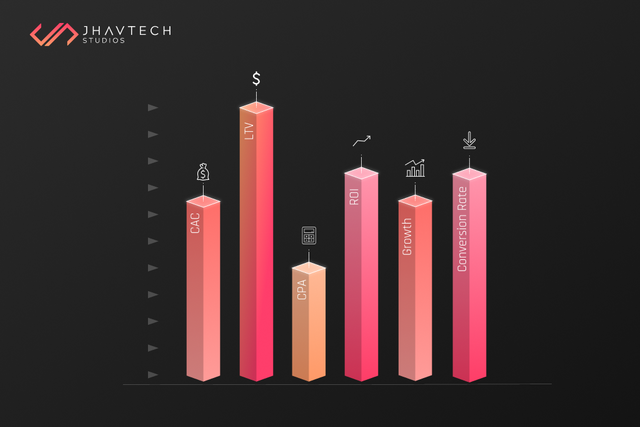A Comprehensive Guide to Measuring Mobile App Performance in 2024
Understanding how to measure mobile app performance is crucial for any development team's success. It involves identifying and evaluating the right metrics and key performance indicators (KPIs) to gain insights into the app's strengths and weaknesses.
By comprehensively assessing these metrics, developers can make informed decisions, prioritize enhancements, and refine their strategies to meet user needs effectively. From user acquisition and engagement to growth and revenue, mobile app performance metrics provide a holistic view of the app's performance across various facets.
Furthermore, these metrics serve as benchmarks for tracking progress over time, enabling teams to adapt and optimize their approaches for sustained success in the competitive mobile app market. Delving into the most important metrics and KPIs allows developers to establish a data-driven framework for continuous improvement, ensuring that their mobile app development approach not only meets but exceeds user expectations.
Mobile App Performance KPIs and Metrics: Understanding the Basics
In the ever-evolving realm of mobile applications, success hinges on understanding user behavior, engagement, and satisfaction. KPIs and metrics play a pivotal role in providing insights into your app's performance.
KPIs are specific metrics that are carefully selected to measure critical aspects of an app's performance and effectiveness in achieving business goals. These KPIs are directly tied to the overall objectives of the app and the business or organization behind it. They serve as benchmarks for evaluating success and progress over time.
User acquisition metrics such as downloads and cost per acquisition (CPA) set the groundwork, while engagement metrics like active users, session length, and retention rate offer valuable insights into user interaction and loyalty.
Additionally, growth metrics such as user growth rate and virality coefficient indicate the scalability and organic reach of your app. User satisfaction metrics, including app store ratings, reviews, and Net Promoter Score (NPS), provide crucial feedback on user sentiment and loyalty.
Revenue metrics such as average revenue per user (ARPU) and conversion rate gauge the monetization potential and effectiveness of your app's revenue streams.
By closely monitoring these metrics and making data-driven decisions, you can optimize user experience, drive growth, and ensure the long-term success of your mobile application.
Importance of Mobile App Performance KPIs:
Strategic Insights: Mobile app KPIs provide strategic insights into how well the app is performing in key areas such as user acquisition, engagement, retention, and revenue generation. By tracking these metrics, stakeholders can gain a clear understanding of the app's strengths, weaknesses, and areas for improvement.
Data-driven Decisions: KPIs empower decision-makers to make smart, data-driven decisions about app development, marketing strategies, user experience enhancements, and resource allocation. By analyzing KPI data, businesses can identify trends, patterns, and opportunities to optimize performance and maximize ROI.
User Satisfaction: Monitoring KPIs related to user engagement, satisfaction, and retention allows organizations to gauge how well the app is meeting the needs and expectations of its target audience. By identifying pain points and areas of dissatisfaction, organizations can implement changes to improve the user experience and increase satisfaction levels.
Revenue Growth: Many mobile app KPIs are directly tied to revenue generation, such as conversion rates, average revenue per user (ARPU), and customer lifetime value (LTV). By optimizing these metrics, organizations can drive revenue growth and increase profitability.
The Difference Between KPIs and Metrics
While often used interchangeably, mobile app KPIs and metrics serve different roles. Metrics serve as specific data points that offer insights into various aspects of app usage, engagement, and technical performance. These metrics encompass a broad spectrum of quantitative measures, such as downloads, retention rates, session durations, crash rates, and conversion rates. They provide valuable information about how users interact with the app and how it performs in the market. However, metrics alone do not inherently tie to overarching business objectives.
On the other hand, KPIs are a subset of metrics specifically selected to align with and measure progress toward broader business goals and objectives. Unlike metrics, which offer granular insights into app performance, KPIs serve as strategic indicators of success. They focus on outcomes directly related to business objectives, such as revenue generation, user acquisition cost, lifetime value of users, retention rates, and user satisfaction. By prioritizing KPIs, businesses can align their efforts and resources toward achieving specific goals, whether it's driving revenue, increasing user engagement, or enhancing customer satisfaction.
In essence, while metrics provide valuable data points for understanding app performance, KPIs play a critical role in guiding strategic decision-making and measuring progress toward organizational success in the competitive landscape of mobile applications.
Mobile App Performance KPIs for Acquisition
Customer Acquisition Cost (CAC): Evaluates the profitability of marketing and acquisition efforts. It is crucial for determining the profitability of marketing campaigns and understanding how efficiently resources are being utilized to acquire new customers.
Lifetime Value (LTV): Measures the overall revenue generated by users throughout their app journey. It helps in understanding the long-term value of acquiring customers. It allows businesses to make informed decisions about allocating resources toward customer acquisition and retention efforts.
Cost Per Acquisition (CPA): Breaks down expenses associated with acquiring individual users through specific channels. It provides insights into which acquisition channels are the most cost-effective. It helps in optimizing budgets by focusing resources on channels with lower CPA.
Return on Investment (ROI): Measures profit in relation to expenses incurred during app development, maintenance, and marketing efforts. It assesses the overall success of an app in terms of generating revenue relative to the investments made.
User Growth Rate: Evaluates the efficacy of user acquisition strategies and market demand for the app. It indicates the effectiveness of user acquisition strategies and is indicative of the app's popularity and market demand.
App Install Rate / App Store Conversion Rate: Measures the effectiveness of acquisition efforts and promotional materials.
Mobile App Performance KPIs for Conversion
Daily Active Users (DAU) / Monthly Active Users (MAU): Crucial for measuring user engagement and retention. DAU and MAU provide insights into how often users are interacting with the app, which is important for assessing the app's popularity and stickiness.
Conversion Rate: Measures the percentage of users who complete specific actions within the app. It is crucial for evaluating the effectiveness of various features, designs, and user flows within the app. It helps in identifying areas where users may encounter difficulties in completing desired actions.
Retention Rate: Measures the percentage of users who continue to use the app over time. Higher retention rates indicate that users find value in the app and are likely to continue using it in the future.
Churn Rate: Tracks the number of users who stop using or cancel the app. It is crucial for identifying factors that contribute to user dissatisfaction or disengagement. Low churn rates indicate higher user satisfaction and app loyalty.
Average Revenue Per User (ARPU): Quantifies the average revenue generated by each user. It provides insights into the app's monetization strategy and the effectiveness of revenue-generating features, like in-app purchases, advertisements, or subscriptions. It helps in evaluating the app's revenue potential and optimizing monetization efforts.
KPIs for Actual App Performance
Average Session Duration: Measures the average time users spend in each app session, providing insights into user engagement. It provides insights into user engagement and the quality of user experiences within the app. A higher average session duration suggests that users find value in the app and are spending more time interacting with its features and content.
App Load Time: Measures the time it takes for the app to launch and become usable after initiation. Faster load times contribute to a seamless user experience, while longer load times generally lead to user frustration and abandonment of the app.
App Crash Rate: Tracks the percentage of app sessions that result in crashes or errors. High app crash rates can frustrate users, leading to negative reviews and uninstallations.
Bug Fix Time: Measures how quickly the development team resolves reported bugs or issues. Rapid bug resolution is important for maintaining app quality and user satisfaction. Longer bug fix times can lead to app instability or malfunction, negatively affecting user experience and potentially causing user churn.
Conclusion
Measuring mobile app performance requires a strategic approach, focusing on relevant KPIs aligned with business goals. By analyzing these metrics, development teams can not only pinpoint areas for improvement but also foster a culture of continuous enhancement.
Ultimately, the journey to mobile app success depends largely on the adept navigation of these performance metrics, paving the way for sustained growth and relevance in an increasingly competitive digital landscape.


